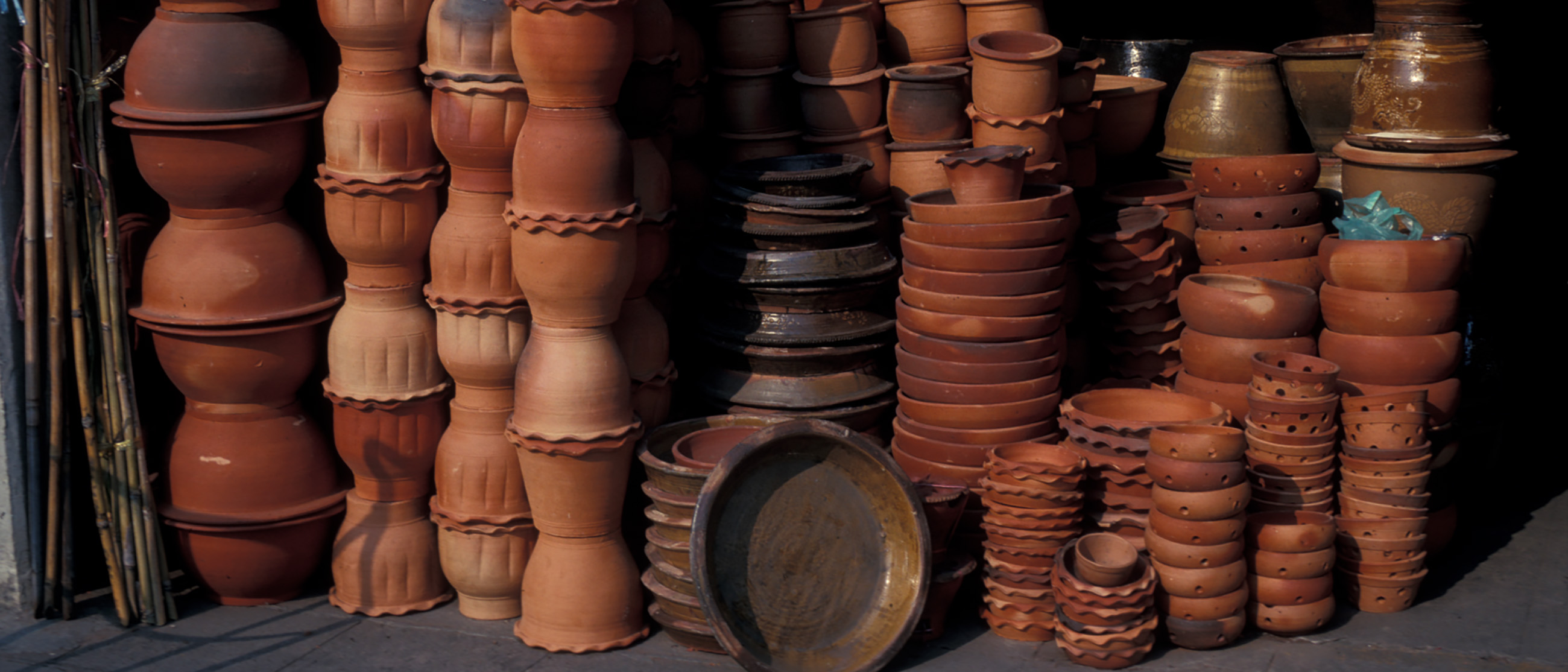
Abstract:
Small, shallow earthenware pots of a distinctive shape—broad rounded base; short, incurved walls; and outward rolled rim, with the base and sometimes the wall showing impressions of a carved wooden paddle used to shape them—show up in far–flung locales and contexts in Mainland Southeast Asia. For decades such pots were identified as products of Oc Eo, an important archaeological site in the Mekong Delta, present–day Kien Giang province, Vietnam. French archaeologist Louis Malleret’s 1960 publication of his 1944 excavation of the site illustrated earthenware vessels of this type, leading to the widespread misapprehension that they had been excavated from Oc Eo, although in fact they were surface finds from surveys of the area.
This family of earthenware vessels can now be identified correctly as made in the nineteenth and early twentieth centuries at workshops in Phetchaburi province, Thailand. Phetchaburi was a flourishing center of palm–sugar production, which made use of these small bowls to cool the molten sugar into cakes and market them. The vessels’ wide dispersal indicates the former vitality of the waterborne palm–sugar trade. Once emptied of sugar, the handy containers found myriad secondary uses—and entered the antiquities market.
This essay first appeared in Muang Boran vol. 17 no. 4 (October–December 1991), pp. 111–22. It was translated and adapted for this catalogue by Robert Retka.